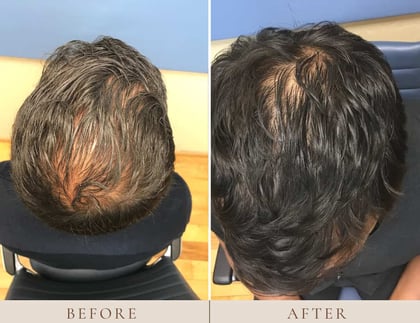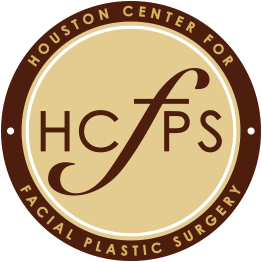Indications for FUE like NeoGraft
Some indications for the NeoGraft FUE procedure are:
- If you wish to wear your hair extremely short and a thin linear scar would be unacceptable.
- If you specifically request a FUE procedure and the surgeon can harvest enough grafts to meet your needs.
- If you have limited loss of hair or require small sessions. This could be limited cosmetic areas like widow's peak (this is a triangular hair loss area typically located in the front of women's foreheads), small vertex balding areas, Norwood class 3 pattern androgenetic alopecia, eyelashes, mustaches, eyebrows and limited alopecia areas secondary to dermatologic disorders.
- If you need treatment of widened scars due to a traditional strip excision.
- If you don't have enough laxity (too tight skin) for a strip excision.
- If you have scarring from trauma, dermatologic conditions or neurosurgical procedures.
- If you have previous strip surgery scars that make further strips impossible. In this case, FUE would be an indication for further extractions.
- If you tend to heal with thickened or wide linear scars.
- If you're an athlete and must get back to full activity immediately following the procedure.
- If you have an excessive fear of scars or pain.
- If your beard or body serves as a donor area.
For body hair transplantation, FUE technique is the only useful technique.
Men and Hair Restoration
Genetics is the most common reason for male hair loss. Also referred to as androgenetic alopecia (AGA), doctors diagnose genetic male pattern baldness based on appearance. As thick terminal hairs begin converting into thin, short vellus-like hairs, it becomes noticeable. This conversion process raises scalp transparency until you lose your vellus hairs overtime and reveal a naked scalp. AGA is also classified on the Hamilton-Norwood scale.
Men who would like to wear an extremely short haircut on the sides of their scalp or in the back, or those requiring less activity restriction (i.e. athletes) following their hair restoration procedure are good FUE candidates. NeoGraft also works well for "scar camouflage" procedures for individuals with a history of previous linear harvests and for body hair transplants.
Hair restoration surgery is ideal for men with sufficient donor hair on the back of their scalp for transplanting into balding areas, moderate hair loss and is in good health. Men should also have reasonable cosmetic goals. While hair restoration can achieve very natural and good results, it can't restore your hair to that of your teenage years.
Women and Hair Restoration
Female hair loss is a common condition and affects 30 million women in the U.S. alone, according to the American Academy of Dermatology (AAD). This is almost half of all cases of hair loss. Still, women all over are silently suffering because of the embarrassment, shock and stress that come with female hair loss.
Some statistics on females and hair loss:
- Female hair loss can start in women as early as their 20s and 30s; however, more commonly it affects women around 45 to 55 years old. Fifty percent of women will have hair loss at the age of 50.
- Common female hair loss causes are telogen effluvium, androgenetic alopecia, nutrition, stress and hormone changes after menopause.
- Some female hair loss signs are thinning of hair on the scalp in the middle area or the part has a slow widening.
- Female hair loss can have an emotional impact. It's harder for women to lose hair since it's tied to beauty and femininity. Hair loss makes women feel less attractive. It seems to be more socially acceptable for men to experience hair loss or be bald.
To correct a hair loss problem, some women wear hair extensions or a wig. Others use a topical prescription drug with some success. However, the effectiveness of these drugs will vary in some individuals are only prevent further hair loss. They don't stimulate new hair growth. Hair restoration could be the answer for women not being comfortable with either of these options. And, NeoGraft is the best minimally invasive system for hair restoration in women.
NeoGraft Procedure for Hair Transplantation
When choosing NeoGraft, you're actually going with a solution that:
- Produces no linear scar and is natural looking.
- Is minimally invasive and requires no staples or stitches.
- Provides a fast recovery time (often just a few days).
- Requires no use of a scalpel (little-to-no discomfort).
- May offer flexible financing (depends on the doctor, but many do)
NeoGraft helps you recreate a natural and full-looking hairline that uses your own hair.
Here's how the NeoGraft procedure works:
Step 1: Hair Follicle Extraction
Extraction or harvesting is where the surgeon removes your follicular units (hair) from your donor area (back of your head, below your crown, between your ears, above the nape of your neck) since this is the hair that's programmed genetically to resist testosterone. Each individual follicular unit is cored by the NeoGraft device and then removed gently with- simultaneous suction.
Step 2: Counting, Trimming and Sorting the Grafts
Once the surgeon extracts the follicular units, they're separated carefully by size. The average follicular unit will contain between one and three hairs. It's important to separate single units of hair from multiple units of hair to create the natural appearing result.
Step 3: Creating the Recipient Site
The surgeon creates the recipient sites in the desired areas of thinning or balding, using the proper angulation and depth to ensure graft viability since these will be the extracted grafts new homes. The surgeon will work closely with you to design an age and gender appropriate hairline specific to you.
Step 4: Placing the Hair Grafts
The surgeon implants each individual follicular unit into each of the recipient sites to achieve the desired outcome. Proper angulation and depth are imperative to ensure there's a maximum graft take rate for delivering a natural appearing outcome when the hair starts growing in various angles depending on the scalp site.
Benefits of NeoGraft Hair Restoration
There are various benefits of the NeoGraft procedure, including:
- Less Invasive Procedure
NeoGraft is a non-surgical FUE transplantation procedure. Since there's less nerve and blood vessel damage, you're in and out quicker than most other patients having other transplantation methods performed. There's also less pain, less scarring and less discomfort.
- More Natural Appearance
The surgeon can calibrate the device itself to match the depth of your harvested follicles with the precise depth they originally were positioned, creating a more natural look. With other tools, a bigger percentage of graft sites could heal with tiny white visible dots. With the NeoGraft procedure, individuals can wear any hairstyle without having to worry if anyone notices evidence of the transplant.
- Quicker Recovery
NeoGraft is also has a much quicker recovery time with quicker post-treatment healing. The procedure itself is also quicker. Factors like these contribute to less treatment complications and risk. You should be able to resume your normal activities faster, typically the next day.
After a few weeks, you should notice some shedding (a normal process in hair growth) following your procedure, and then your natural hair will start growing in about three to four months after the shedding and will continue growing normally. This isn't always a benefit with other methods of treatment. By nine months, your final outcome should be a full head of natural looking, healthy hair.
- More Successful Results
The hair transplant process is more successful with NeoGraft too. The process of innovative collection is tailored specifically for each individual, improving viability of each graft. Usually, a higher hair regrowth percentage takes away the need for shaving for the graft extraction process, reducing the cost per graft. Since each NeoGraft treatment transplants a higher number of follicles than the stripping method, you are less likely to require more procedures later on.
- Almost All Individuals are Candidates
While there's typically a number of male-specific procedures, females also struggle with hair loss and actually account for 40 percent of individuals affected by hair loss in the United States. Both male and females experience hair loss for various reasons.
Women often struggle with alopecia (diffused thinning) on various areas of their scalp and men often have distinct baldness patterns that impact certain sections of their scalp (mainly the top). And, while men typically lose hair due to heredity, things like disease, stress or medications can cause hair loss as well. This includes almost all individuals with no notable limitations. Ultimately, anybody looking to add or restore fuller hair can benefit from the NeoGraft procedure.
Hair Transplant Price/Cost in Houston
The cost of hair transplantation will depend greatly on how much hair you're moving, but normally the price could range from $4,000 to $15,000. Also, many insurance providers won't cover hair transplantation. Read more about Hair Transplant Costs in Houston, Texas.
Who's the Best to Perform a Hair Transplantation NeoGraft Procedure in Houston, Texas
Presently in the U.S. the industry of surgical hair transplantation is totally unregulated by both the medical community and the government. In the U.S. pretty much any licensed doctor can perform hair transplant surgery legally without any accreditation or surgical training of any kind.
So, you'll want to be careful with this and really do your research when trying to find the absolute best hair transplant surgeon.
Check their background, training and credentials. When finding the best hair surgeon in Houston, TX, you first want to find out their specialty. Ideally, they'll be board certified as a plastic surgeon, otolaryngologist or dermatologist.
This is particularly important when choosing a NeoGraft hair restoration surgeon. Not all hair surgeons are experienced with this FUE procedure. Dr. Bradford S. Patt is one hair surgeon who has the skills and experience working with the NeoGraft procedure.
He's recognized in the leading and prestigious physician listings of Super Doctors and Top Docs of Houston for 11 straight years. He's board-certified in facial plastic, reconstructive and neck and head surgery and otolaryngology. He's an Executive Board Member of the Harris County Medical Society and a member of the American Academy of Facial Plastic Surgery. He's also been in practice for almost 20 years which provides you with a world of experience, skill and expertise.
Dr. Pratt and his team are always learning about the newest technologies, developments and innovative treatment techniques to provide patients with the most advanced non-surgical and/or surgical techniques out there, including the NeoGraft procedure.
What to Expect After Your NeoGraft Hair Transplant Procedure
After a traditional hair transplant surgery, most people are concerned with the length of downtime and recovery. Usually, you can get back to your normal activities within a few days of your NeoGraft procedure. Some people have even been able to go back to work the next day after their procedure.
After seven to 10 days, your transplanted hair will be safely rooted under your scalp and your hair should cover the donor site by then too. After this, the donor are where the surgeon performed the NeoGraft procedure should be virtually undetectable. Many individuals claim they experienced little to no pain during their procedure and during recovery.
You can expect excellent results with the NeoGraft procedure. You can wear your hair long or short, no matter if you're a man or woman, with natural-looking results.
Once your hair sheds during the normal new growth process, you'll begin enjoying continuous new hair growth in just a few months, leaving you with healthy and natural results.
You can expect fuller results if you have:
Although hair restoration can provide you with superb, natural results, you should still realize you might not obtain hair restoration at a teenage density. Your hair surgeon will decide on the amount of coverage you need to provide you with the appearance you're looking for.
Where Can I Find a Hair Transplantation Neograft Procedure in Houston, Texas
If you need more information or would like to schedule your hair transplant consultation with Dr. Patt of Houston Center for Facial Plastic Surgery, complete our online form here or call the office at 281-649-7170. We have recently remodeled our Houston Center for Facial Plastic Surgery facility to provide all our patients with more convenience, comfort and confidence. We provide you with a charming and warm atmosphere where you can feel like home during your procedure.
During your comprehensive consultation with Dr. Patt, he will listen to your areas of needs and concerns, and then go over with you the different surgical techniques and treatment procedures he offers based on the cause and extent of your hair loss. He will provide you with a full professional evaluation and recommend the best option for your individual needs, including the NeoGraft hair transplant procedure. You can feel confident in his expertise and knowledge as Dr. Patt has been practicing for more than 20 years. Contact us today for your hair transplant in Houston Texas.
By Bradford S Patt, MD





